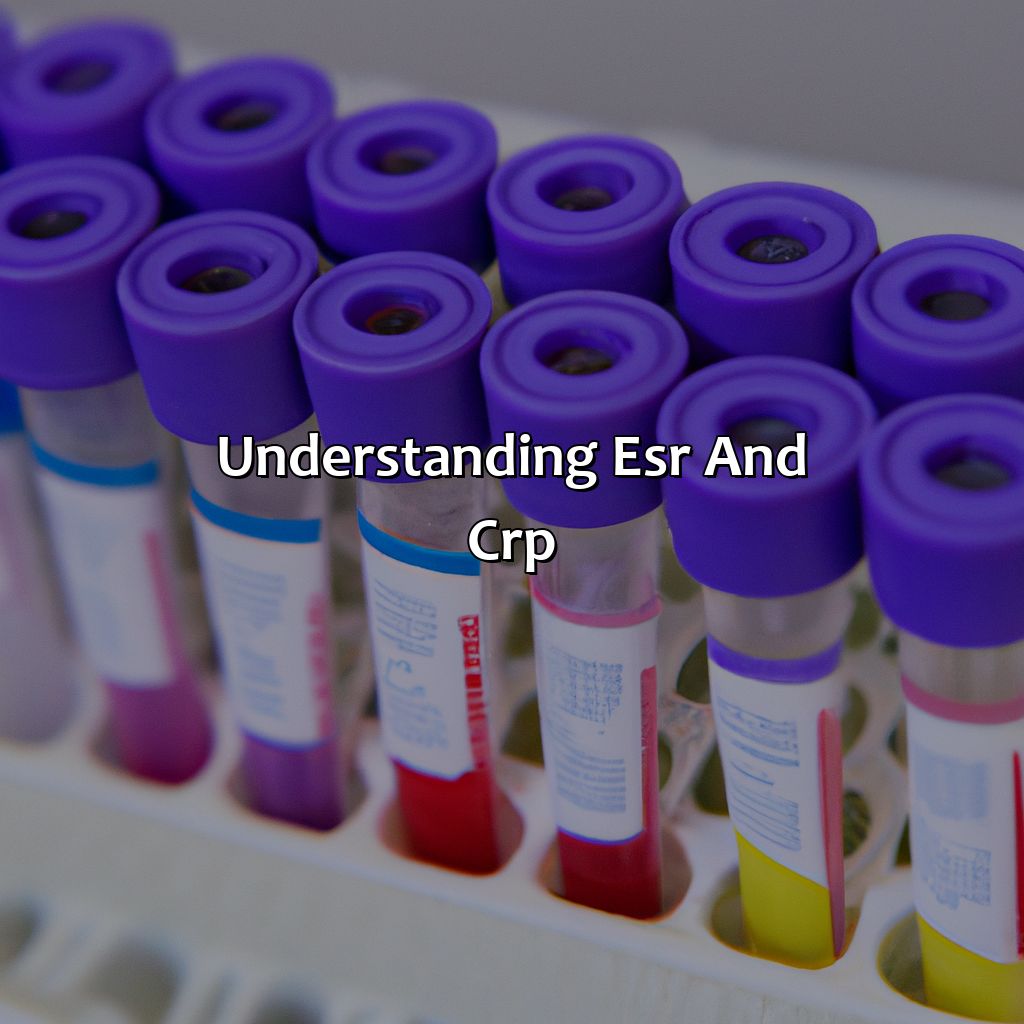##Key Takeaways:
Key Takeaway:
- ESR (Erythrocyte Sedimentation Rate) and CRP (C-Reactive Protein) testing are commonly used medical diagnostics that help to detect inflammation and infection in the body.
- The blood collection tubes used for ESR and CRP testing are specialized and come in different colors. The tube for ESR testing is typically a black or lavender top tube, while the tube for CRP testing is typically a red top tube.
- The color of the tubes used for ESR and CRP testing corresponds to the type of additives used. The black or lavender top tube for ESR contains an anticoagulant to prevent clotting, while the red top tube for CRP contains no anticoagulant to allow for clot formation and subsequent separation of serum for testing.
Understanding ESR and CRP
Photo Credits: colorscombo.com by Peter Nguyen
To figure out the diagnosis with ESR and CRP, you must know about the two tests. ESR measures inflammation and CRP looks at protein made by the liver. We’ll look at the two tests in-depth.
First, we’ll cover the normal range and interpretation of ESR. Then, we’ll move onto CRP levels and what they mean.
What is ESR?
The erythrocyte sedimentation rate (ESR) is a common blood test that measures the sedimentation, or settling, of red blood cells over time. This process can be affected by various proteins and chemicals in the blood, including acute-phase reactants like C-reactive protein (CRP).
Therefore, ESR levels are often used as a nonspecific indicator of inflammation in the body. However, it is important to note that ESR ranges can vary depending on age, gender, and other factors. A normal ESR level for men under 50 is typically less than 15mm/hr, while women under 50 have a normal range of less than 20mm/hr.
On the other hand, CRP is a protein produced by the liver in response to inflammation or tissue damage. While it also serves as a general marker for inflammation like ESR, CRP levels can rise and fall more quickly in response to changes in inflammatory processes.
Proper blood collection techniques with specific types of tubes are important for accurate ESR and CRP testing. ESR requires anticoagulated blood collection within four hours of testing using specific tubes colored purple or black top EDTA tubes while CRP measurement requires serum sample from Red tube/Plain tube Plus Serum Separator Tube (SST).
It is essential to interpret both the ESR and CRP results along with clinical findings for proper diagnosis and treatment. For instance, an elevated ESR paired with high CRP levels may indicate an underlying inflammatory disease such as rheumatoid arthritis or lupus.
ESR and CRP interpretation should always be done by an experienced medical professional since abnormal results alone do not confirm or rule out a particular disorder.
CRP ranges from normal to oh-no, while ESR and CRP together give an interpretation that’s a must-know.
What is CRP?
C-reactive protein (CRP) is a protein produced by the liver in response to inflammation in the body. It is commonly used as a marker of acute-phase inflammation and infection. CRP levels can increase rapidly, often within hours of the onset of inflammation, but they also decrease quickly once the inflammation subsides. Normal CRP range is <10 mg/L, and values over this level indicate acute inflammatory response or infection. Unlike ESR, CRP testing cannot detect chronic conditions like arthritis or autoimmune disorders.
Measuring CRP levels in combination with ESR allows for a more complete interpretation of an individual’s inflammatory activity. While ESR and CRP are nonspecific markers of inflammation, they do have different roles in diagnosis. ESR can be useful for detecting chronic inflammations such as tuberculosis while CRP may play a role in identifying early warning signs for heart disease. The interpretation of ESR and CRP results depends on various factors such as age, sex, medical history, medications being used, etc.
The normal variation exists among individuals and thus normal ESR and CRP levels vary depending on multiple determinants mentioned earlier. Incorrectly interpreting test outcomes could result in unnecessary treatments or failing to treat underlying conditions properly.
Research conducted by Roche diagnostics found that high-sensitivity CRP (hsCRP) measurements are useful for cardiovascular risk prediction even in healthy individuals without any obvious risk factors.
Collecting blood for ESR and CRP testing is like a box of crayons – it’s all about the colors of the tubes.
Blood Collection for ESR and CRP Testing
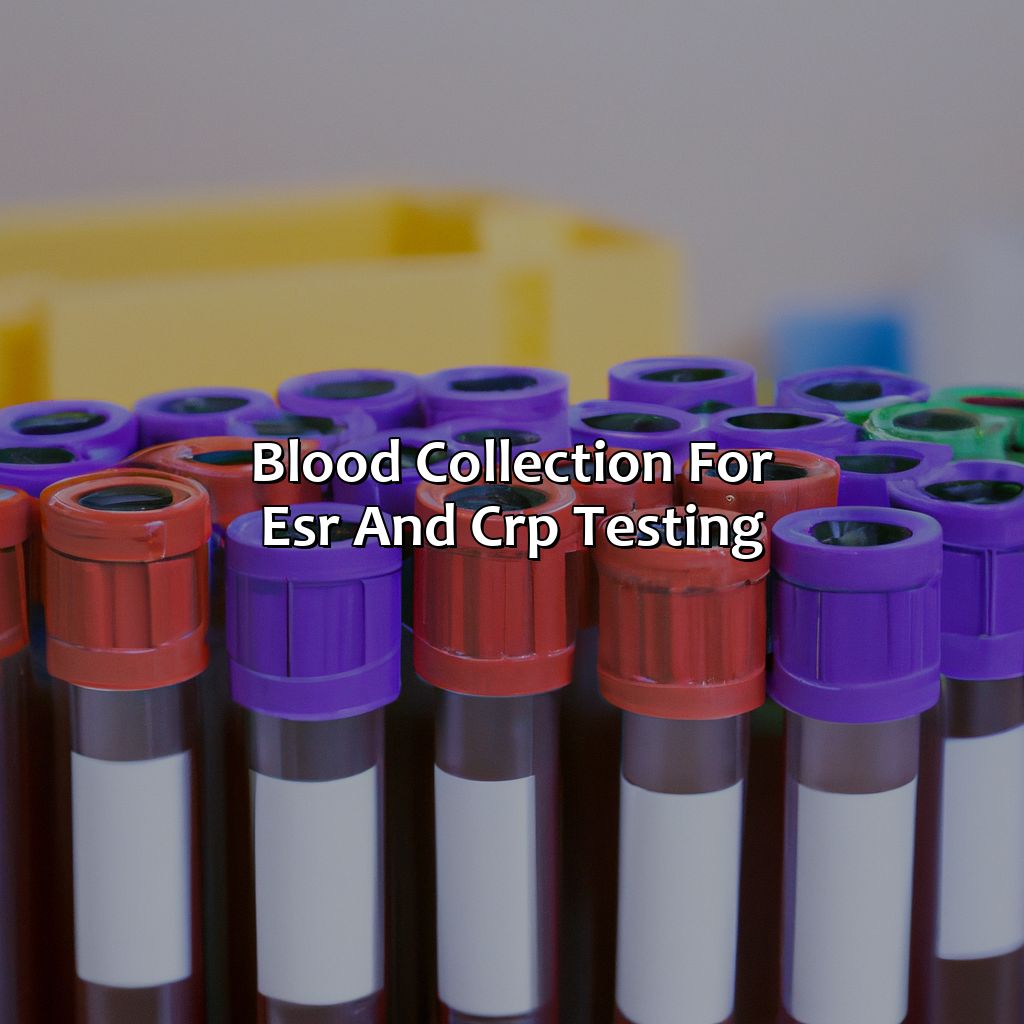
Photo Credits: colorscombo.com by Edward Perez
Choosing the right tubes for ESR and CRP testing? Don’t worry! The section “Blood Collection for ESR and CRP Testing” has the answers. Sub-sections include “Overview of blood collection tubes” and “Color of tubes for ESR and CRP testing”. You’ll know which tubes to pick and which colors and additives to use for accurate blood collection and results.
Overview of blood collection tubes
Blood collection tubes play a vital role in collecting samples for ESR and CRP testing. To provide accurate and reliable results, it’s important to understand the basics of these tubes. Here is an overview of the different types of tubes used for ESR and CRP testing along with their functions.
| Tube Type | Color | Function |
|---|---|---|
| Sodium Citrate Tube | Light Blue | Utilized for ESR testing due to its anticoagulant properties that prevent clotting during transportation. |
| Plain Tube / Serum Separator Tube (SST) | Red/Gray/Brown or Gold/Yellow | These tubes are used for CRP testing as they have a clot activator that ensures prompt coagulation, allowing serum separation for CRP testing. |
| Heparin Tube | Pink / Green / Light Green / Dark Green (Lithium-heparin) Yellow (ACD – A anticoagulant) Burgundy (EDTA-Anticoagulant) Royal Blue (Trace Element Testing) Purple (EDTA plasma separation) |
Anticoagulants such as heparin are used in these tubes to prevent the formation of blood clots in the sample, enabling precise ESR results. Specialized tubes are also used for different tests but they might vary based on manufacturers. |
It’s important to note that sodium citrate and plain tubes are the most commonly used for ESR and CRP testing, respectively. The anticoagulants in these tubes inhibit the coagulation of blood and help collect uncontaminated samples suitable for further analysis.
A pro tip to ensure accuracy in ESR and CRP testing is ensuring proper identification of the patient and labeling of blood collection tubes with the necessary information. It’s also essential to follow protocols while drawing the blood and handling it during transportation to maintain specimen integrity.
In summary, using specialized tubes for ESR or CRP testing prevents errors by providing uncontaminated samples. Understanding the importance of different types of tubes can aid in accurate results interpretation, leading to better diagnosis and treatment monitoring.
Picking the right color tube for ESR and CRP testing is like trying to match your socks in the dark – crucial, but a bit of a guessing game.
Color of tubes for ESR and CRP testing
Blood collection tubes for ESR and CRP testing require specific colors that differ from other tests. The color tube for ESR and CRP testing helps to identify and differentiate the type of test tube needed for each sample.
| Tube Color | ESR Tube Additives | CRP Tube Additives |
| Purple/ Lavender | EDTA or Sodium Citrate | None Required |
| Red/ Grey mottled stopper/ Plastic Red with gold band(Gel) | None Required | Silica Clotting Activator
Polymer Gel with Silica clot activator |
ESR tubes are generally purple/lavender-colored, indicating the presence of EDTA or Sodium Citrate as additives, while CRP tubes vary between red/grey mottled, plastic red with a gold band (gel). They contain silica clotting activator or polymer gel with silica clotting activator as additives. The different colors and additives help to prevent contamination and ensure proper testing accuracy.
The color tube for ESR and CRP testing varies significantly from other tubes, such as those used for chemistry or hematology assays. It is crucial to differentiate between these tubes to the benefit of patients’ health outcomes.
In a real-life scenario, a physician once conducted an ESR test using the wrong tube color for ESR testing, resulting in inaccurate results. Haplessly, she had to perform the same test all over again using the correct ESR tube. This proof justifies why it is necessary to pay close attention to the color and type of tube used during blood collection.
ESR and CRP may sound like a hip-hop duo, but in reality, they’re just two blood tests that tell us different things.
Differences Between ESR and CRP Testing
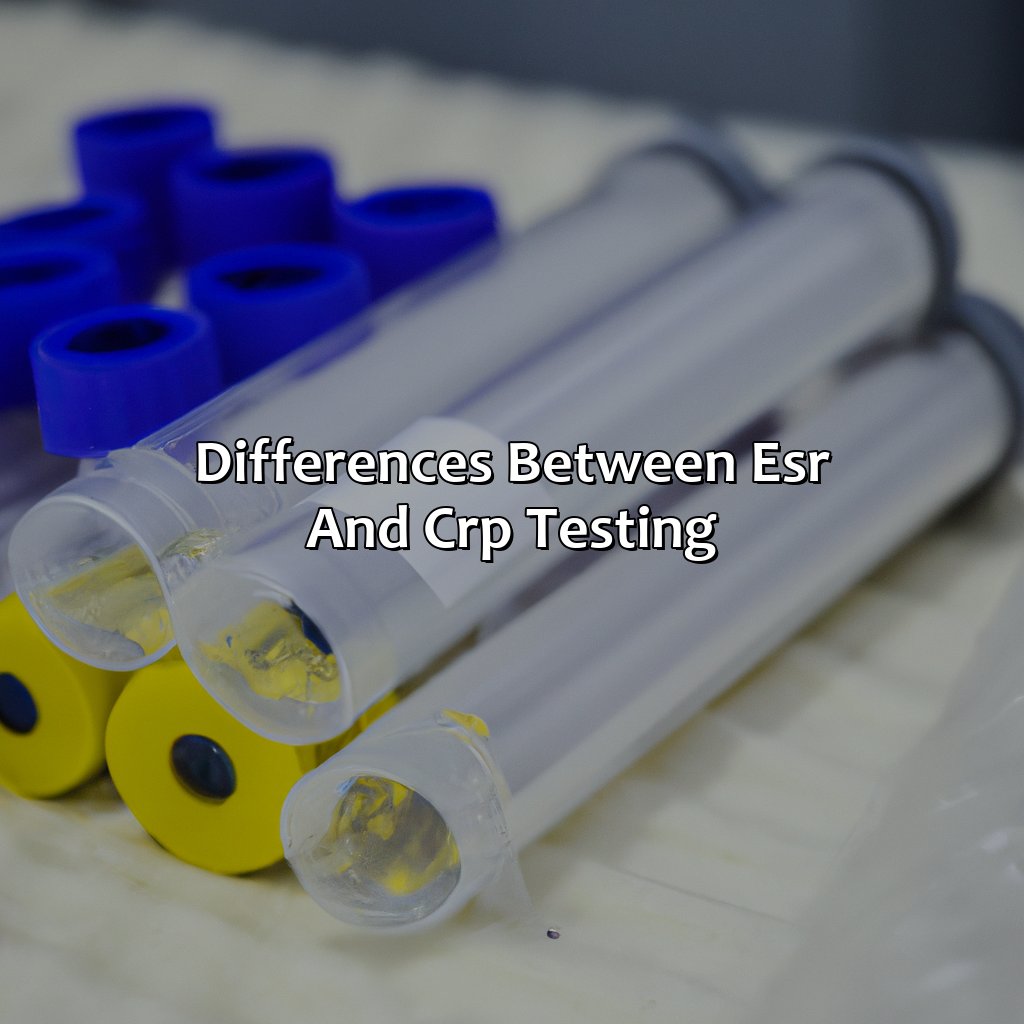
Photo Credits: colorscombo.com by Brandon Garcia
We must explore ESR and CRP testing protocols to understand the differences between them and their clinical importance. Both ESR and CRP measurements are often done in a routine blood test. However, each has its own significance. We will discuss the role of ESR and CRP for diagnosis. Plus, we’ll cover their normal ranges and clinical significance. Knowing these two tests and their importance in detecting inflammation and infection will help you better understand them.
Role of ESR in diagnosis
Erythrocyte sedimentation rate (ESR) is an essential clinical parameter that helps in evaluating the presence of inflammation or infection. The significance of ESR and CRP measurement cannot be overemphasized, as it can provide significant clues to the underlying pathology. In terms of diagnosis, ESR measures the rate at which red blood cells settle in a tube, making it a useful diagnostic adjunct to other laboratory tests.
The ESR count varies with age, gender, and certain medical conditions such as pregnancy and menstruation. The normal range of ESR and CRP for women under 50 years is typically between 0-20 mm/hour, whereas men under 50 years fall within the range of 0-15 mm/hour. However, these values may increase with age, reaching up to 30 mm/hour in people over 60 years old.
In general, the role of ESR and CRP significance rests on its ability to detect inflammatory or infectious processes that may not be apparent clinically. With regard to ESR’s specific use in diagnosis, it is mainly helpful in identifying systemic infections like tuberculosis that often cause elevations beyond typical ranges.
Therefore, it is crucial for healthcare professionals to understand when and how to order ESR and CRP testing while interpreting the results in light of patient history and overall clinical presentation. Not performing these tests appropriately could lead to missed diagnoses or delayed treatment interventions.
CRP may stand for C-reactive protein, but when it comes to diagnosing inflammation-related issues, it could also mean “Could Really Prove” helpful.
Role of CRP in diagnosis
CRP plays a vital role in diagnosing inflammatory conditions and infections by acting as a marker of acute phase response. It is synthesized in the liver, and its levels rise within hours of an infection or inflammation. Its significance lies in its ability to differentiate between bacterial and viral infections since CRP levels generally increase much higher during bacterial infections. Moreover, unlike ESR, which measures how quickly red blood cells settle in a tube over time, CRP measurement is more specific to inflammation and can detect early-stage onset of diseases.
Normal range for CRP concentration falls below 10 mg/L, whereas abnormal ranges indicate acute or chronic inflammation.
Interestingly, high CRP levels also indicate the risk of coronary artery disease (CAD), making it an essential marker for cardiovascular risk assessment. A study published by the European Heart Journal analyzed data from over 16000 participants and found that individuals with elevated CRP measurements are more likely to develop CAD than those with lower concentrations.
ESR and CRP testing have come a long way in medical advancements, but interpreting the results can still leave you scratching your head.
Interpretation of ESR and CRP Results
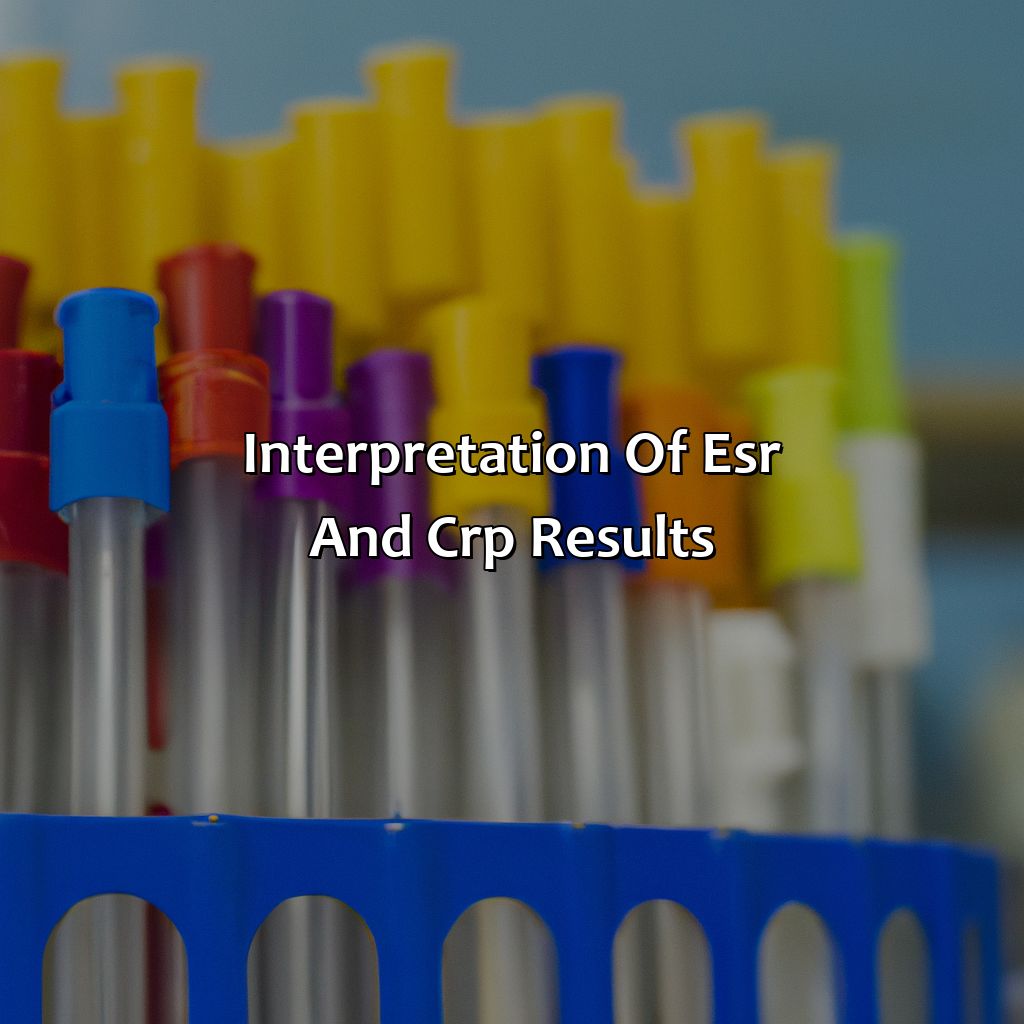
Photo Credits: colorscombo.com by James Clark
Interpretation of ESR and CRP Results
ESR and CRP testing standards have undergone significant medical advancements, leading to improved accuracy and reliability of results. These tests are commonly used to help diagnose and monitor inflammatory conditions and infections. It is imperative to understand that ESR and CRP levels only serve as indicators of inflammation and are not specific to any particular disease.
To interpret ESR and CRP results, physicians consider various factors, including the patient’s medical history, symptoms, and other diagnostic test results. Elevated ESR or CRP levels suggest the presence of inflammation in the body, but further testing is necessary to locate the source of the inflammation accurately.
One unique detail to consider is that CRP is a more sensitive and faster-responding marker than ESR in detecting inflammation. Therefore, CRP is preferred for acute-phase testing, whereas ESR is useful in monitoring chronic conditions.
A true history of ESR and CRP medical advancements began in the 1980s when high-sensitivity CRP tests were developed, significantly improving the accuracy and sensitivity of CRP measurements. Similarly, new technologies for automated ESR testing have led to faster and standardized results.
Importance of ESR and CRP Testing
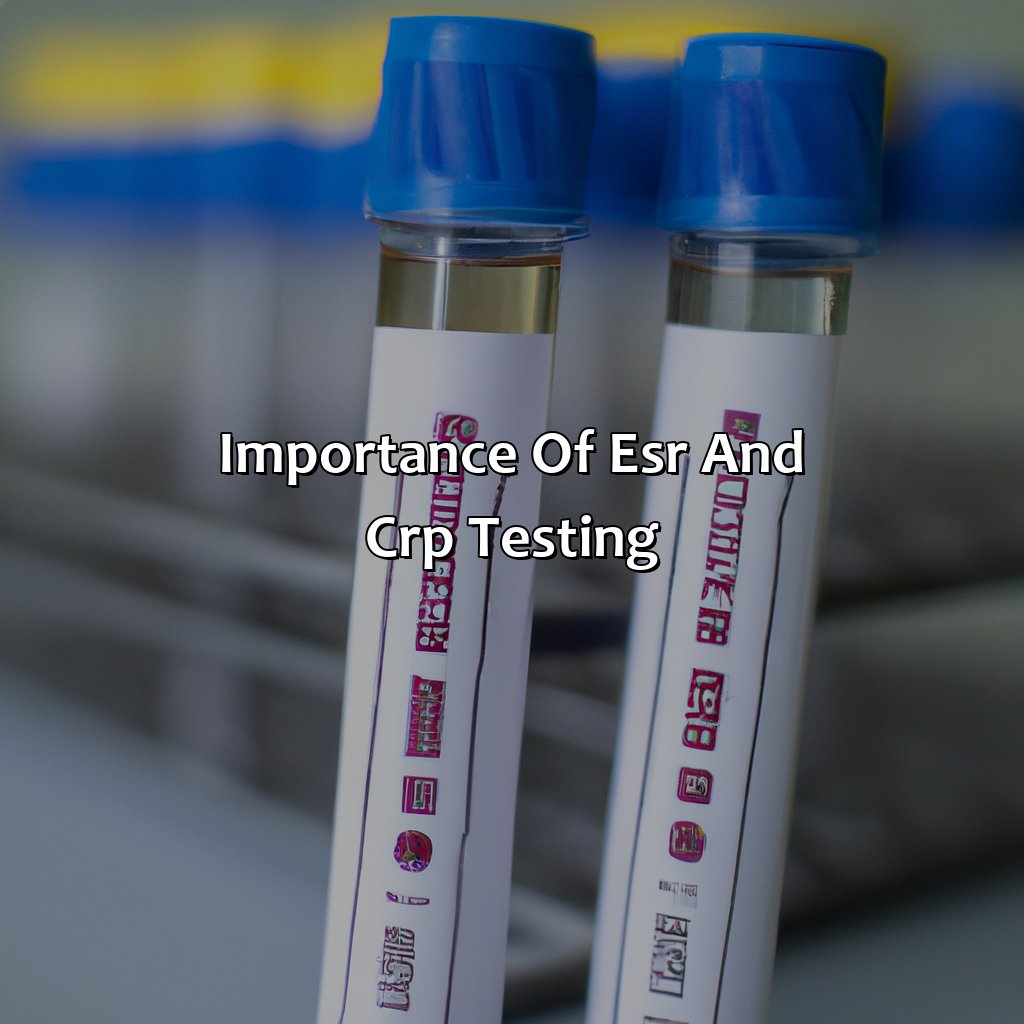
Photo Credits: colorscombo.com by Gerald Lopez
ESR and CRP tests are vital tools used to diagnose diseases and inflammation markers. These blood tests analyze levels of ESR and CRP in the body, which can help identify potential health problems and monitor inflammation. ESR and CRP lab tests are commonly used in medical evaluations for various diseases, including rheumatoid arthritis, lupus, and infections. Additionally, periodic testing can help monitor the effectiveness of treatments and track progression.
Healthcare professionals emphasize the importance of ongoing ESR and CRP medical tests to ensure optimal health and early detection of underlying conditions. Don’t miss out on the opportunity to stay healthy by neglecting these disease and inflammation markers.
Five Well-known Facts About What Color Tube for ESR and CRP:
- ✅ ESR (erythrocyte sedimentation rate) is usually collected in a purple top tube (EDTA). (Source: ARUP Laboratories)
- ✅ CRP (C-reactive Protein) is typically collected in a plain red top tube (no additive). (Source: Mayo Clinic Laboratories)
- ✅ The purple top tube is used to collect blood for a complete blood count (CBC). (Source: Quest Diagnostics)
- ✅ The red top tube is also used to collect blood for tests such as glucose and liver function tests. (Source: Lab Tests Online)
- ✅ It is important to follow proper collection procedures and label each tube correctly to prevent errors and ensure accurate test results. (Source: Clinical Laboratory News)
FAQs about What Color Tube For Esr And Crp
What color tube for ESR and CRP?
The recommended color of tube for ESR (erythrocyte sedimentation rate) and CRP (C-reactive protein) is a lavender/purple top tube.
What is the reason for using a lavender/purple top tube for ESR and CRP?
The lavender/purple top tube contains an anticoagulant called EDTA (Ethylenediaminetetraacetic acid) which prevents the blood from clotting during the test. EDTA also helps to maintain accurate test results by preserving blood cell morphology and stability.
Can a different color tube be used for ESR and CRP?
No, a different color tube should not be used for ESR and CRP as it may affect the accuracy of the test. The lavender/purple top tube is specifically designed for these tests.
Is fasting required before ESR and CRP tests?
No, fasting is not required before ESR and CRP tests as these tests do not require the patient to be in a specific state.
What conditions are ESR and CRP tests used to diagnose?
ESR and CRP tests are used to diagnose inflammation in the body. They are commonly used to diagnose conditions such as rheumatoid arthritis, lupus, and inflammatory bowel disease.
How long does it take to get the results of ESR and CRP tests?
The results of ESR and CRP tests can vary depending on the testing facility. Generally, results can be obtained within 24-48 hours.
